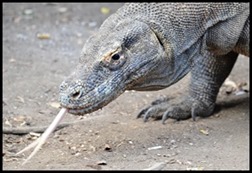Komodo Dragons

|
Komodo
Dragons 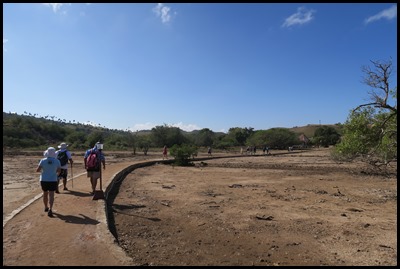 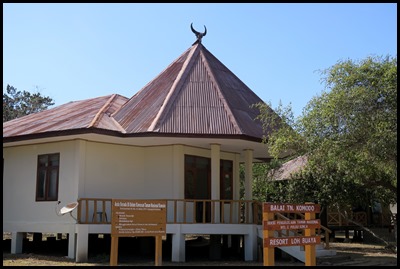 We left Ivan’s boat and took the short
walk to the Ranger Station, there we paid our
National Park and entry fees.
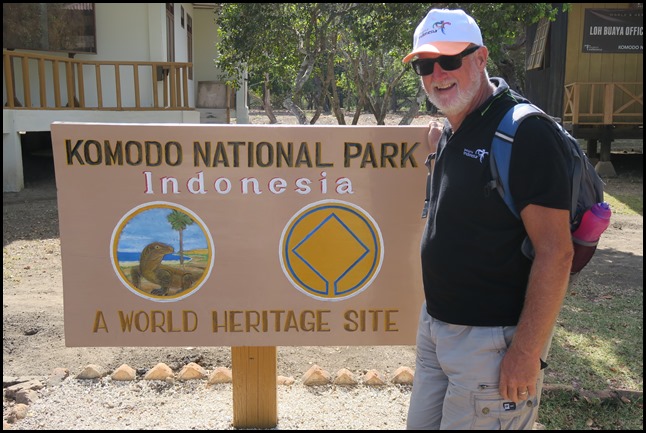 Bear posed by the
sign, very excited to be so close to ticking a major bucket list item. He
didn’t have to wait long.
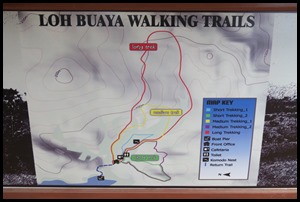 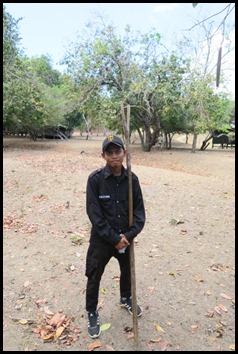 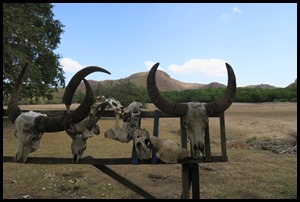 Once we had paid we stood to choose the route we wished to follow, met one of our guides that looked about seven (wielding his
trusty forked stick) – later he would tell Bear that his aunt was poking around
in the bush for fruit when she was bitten by a dragon, death came later in
hospital in Labuan Bajo, she was fifty eight. Evidence of all that remains of a water buffalo after a dragon breakfast........
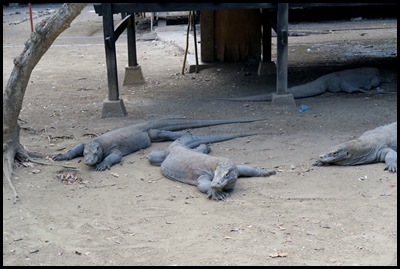  The consensus was to take the medium walk
which would take in a nest site, a bit of bush and some savannah. Not to far
from the Ranger Station, cafe-cum-shop and toilets, we met our first dragons hanging out with the hope of titbits from
the guides mess hall.
 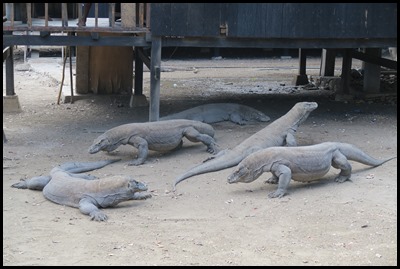  A titbit was indeed thrown and with speed
similar to a crocodilian attack, not a single noise and the fastest of these
dinosaur creatures made it game over and they soon
settled back to snooze. So hard to imagine them at full gallop or swimming (if
the fancy takes them they are perfectly able to swim across to south Flores
Island). The young have to be efficient climbers from a very tender age as any
dragon - including their parents would think nothing of eating such a tasty
treat.
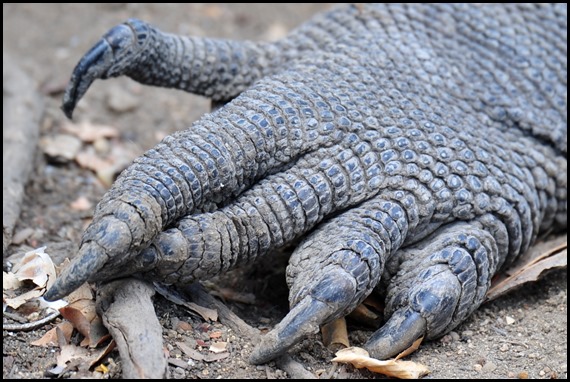 A
hand.
The National Geographic says: Komodo dragons have thrived in the harsh climate of Indonesia's Lesser Sunda Islands for millions of years. Reaching 10 feet (3 meters) in length and more than 300 pounds (136 kilograms), Komodo dragons are the heaviest lizards on Earth. They have long, flat heads with rounded snouts, scaly skin, bowed legs, and huge, muscular tails. Diet: As the dominant predators on the handful of islands they inhabit, they will eat almost anything, including carrion, deer, pigs, smaller dragons, and even large water buffalo and humans. When hunting, Komodo dragons rely on camouflage and patience, lying in wait for passing prey. When a victim ambles by, the dragon springs, using its powerful legs, sharp claws and serrated, shark-like teeth to eviscerate its prey. Feeding: Animals that escape the jaws of a Komodo will only feel lucky briefly. Dragon saliva teems with over 50 strains of bacteria, and within 24 hours, the stricken creature usually dies of blood poisoning. Dragons calmly follow an escapee for miles as the bacteria takes effect, using their keen sense of smell to hone in on the corpse. A dragon can eat a whopping 80 per cent of its body weight in a single feeding. Recent studies have found that the bite produces a blood-thinning agent which helps in the demise of the prey. Population: There is a stable population of about 3,000 to 5,000 Komodo dragons on the islands of Komodo, Gila Motang, Rinca, and Flores. However, a dearth of egg-laying females, poaching, human encroachment, and natural disasters has driven the species to endangered status.
 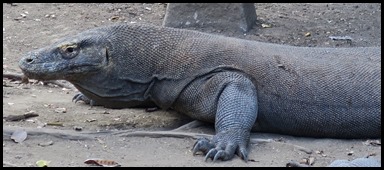
Status: Vulnerable Type: Carnivore Lifespan: Up to 30 years Size: 10 ft (3 m) Weight: 330 lbs (150 kg) Did you know? Komodo dragons can run up to 11 mph (18 kph) in short bursts.
Size relative to
man. 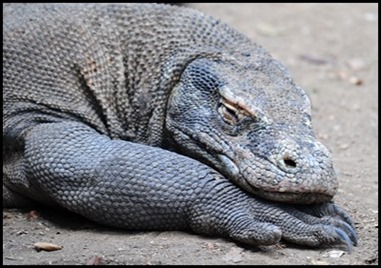 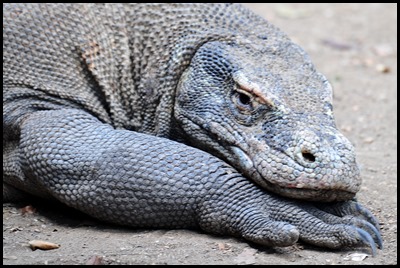 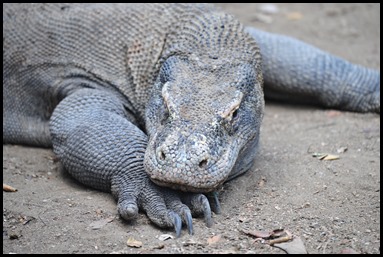 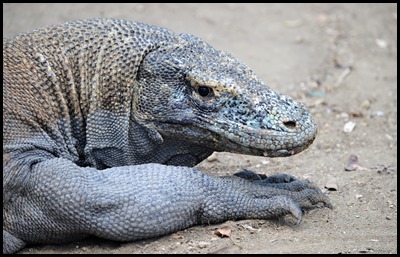 Cute – hardly, menacing – definitely, powerful –
unquestioningly.
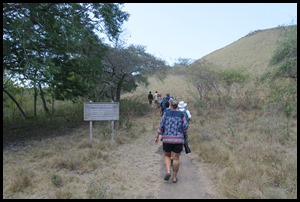 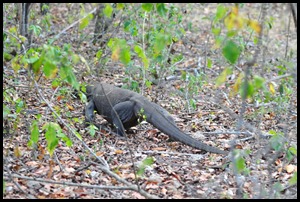 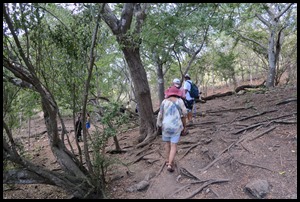 We headed away from camp along the track – a guide at each end of the column. Halted
by a lady up ahead we all stood aside but she chose a short
cut through the shade and on we went. We saw monkeys in the trees, a sleeping tree viper and a few
birds.
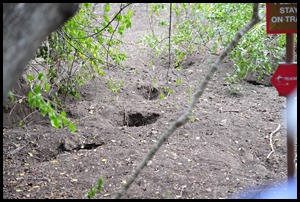  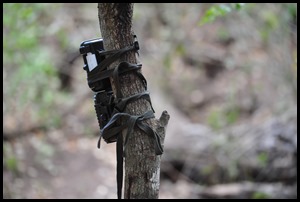 Arriving at a small
nest site, the eggs were laid a month ago so they have another eight
before hatching. Cameras monitor the area. There is a
similar story to the turtle nest we have visited – risk of being accidentally
dug up as another female readies a hole for herself, foraging creatures who want
egg for breakfast and infertile eggs leave the future of the Komodo dragon
vulnerable. There are success stories in zoos around the world so it is
comforting to know there are rescue populations out there.
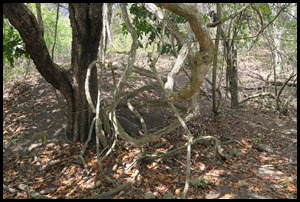 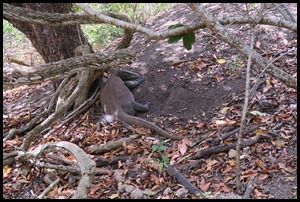 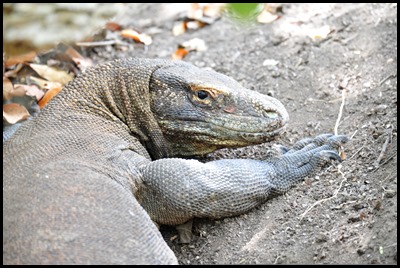 A bit further along
we saw how easy it was to stumble across a
dragon scaring the pair of you (just as our guide’s aunt had done). At first we
just saw the tree, partially hidden by the dry spiralling vines and very disguised was a single dragon about to settle to sleep.
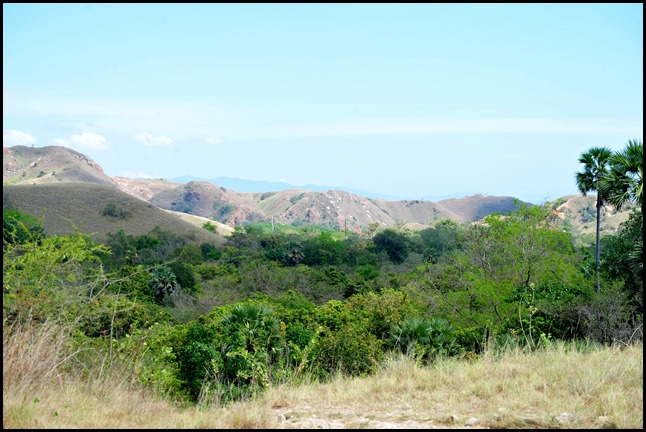 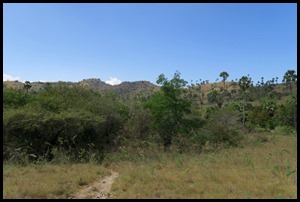 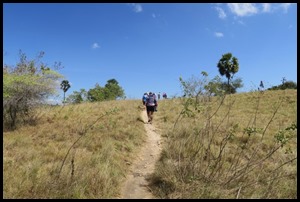  We walked for a time in
the open with the promise of a bigger nest site.
  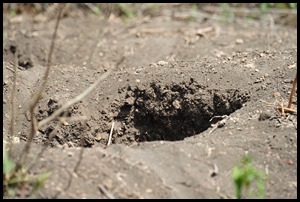 This area was
huge, hot and busy.
 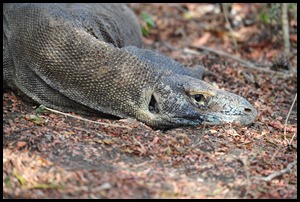   A lady was on
guard but saw us as no threat and slowly closed her eyes. Very
weird.
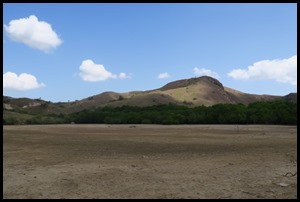 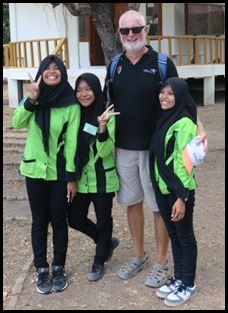 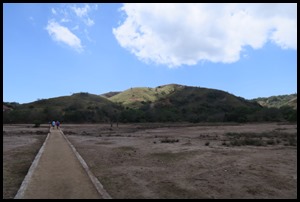 We walked back to the Ranger Station, had
a cold drink and looked through the tee shirts and other grockle stuff before
going back to the staff mess for ‘that picture’. A final look at the tidal and barren side of the island. Bear posed with
some hyper-excited sixteen year olds before we headed back to our ride back to Labuan Bajo.
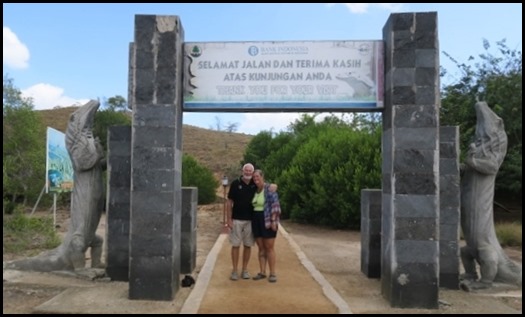 Posing by the
exit.
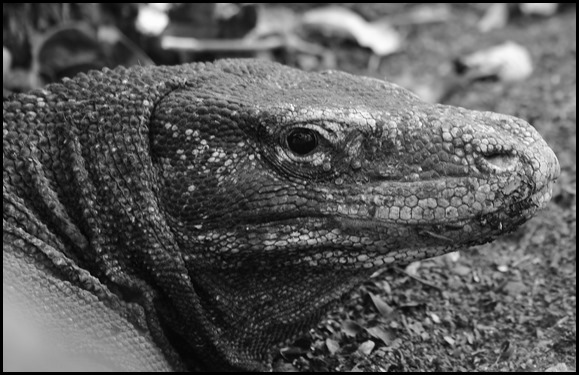 The Komodo
dragon an unforgettable experience ................and of course we had
to have the tourist shot.
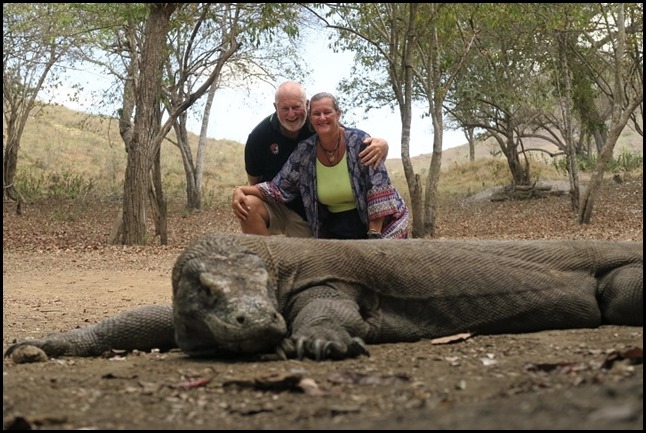 ALL IN ALL UNBELIEVABLE CREATURES
AMAZING EXPERIENCE OF A
LIFETIME |
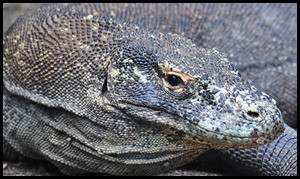
![clip_image001[3] clip_image001[3]](/ul/blog/mailasail.com/beezneez@mailasail.com/3426/gifNA8tFwHEBL.gif)
